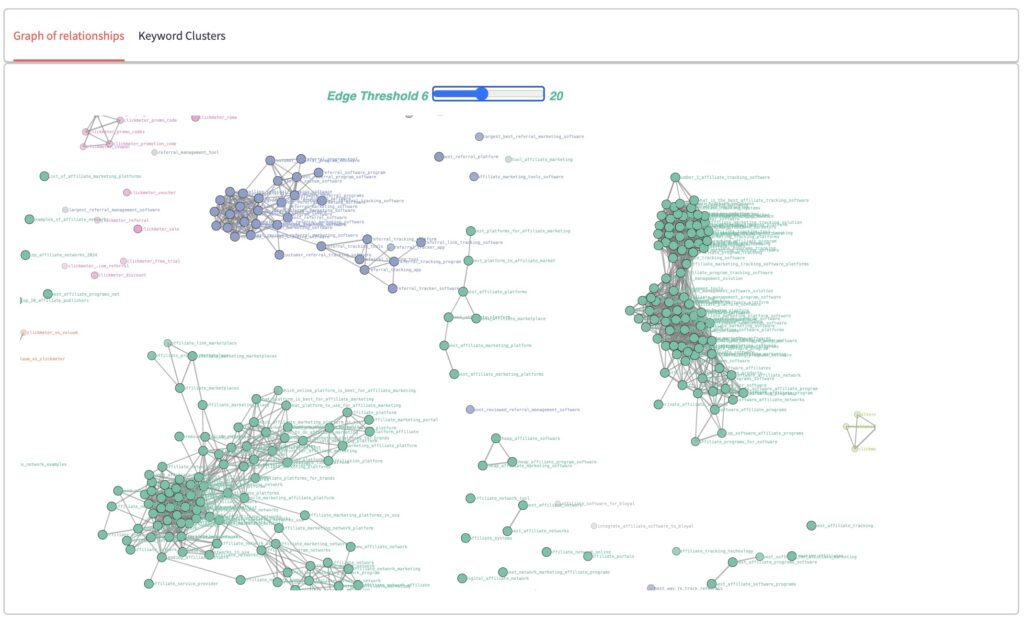
Understanding PPC Optimization and Keyword Grouping
Learn how to optimize PPC campaigns and master keyword grouping for higher relevance, improved Quality Scores, better ROI, and effective campaign management. Di...

Search term isolation in PPC campaigns targets high-performing search terms and excludes irrelevant ones to boost ad relevance, cut costs, and maximize ROI.
Search term isolation is a method used in pay-per-click (PPC) advertising to improve campaign performance by focusing on search terms that lead to conversions and removing those that do not. This approach ensures your advertising budget targets the most effective terms, increasing return on investment (ROI) and making your campaigns more efficient. Unlike traditional keyword targeting, this method examines actual search queries to pair them with the most appropriate ads, aligning more closely with user intent.
For example, if your PPC campaign promotes “organic coffee beans,” search term isolation involves finding terms like “buy organic coffee beans” (that result in conversions) and excluding poor-performing terms like “coffee bean art.” This directs your budget toward terms that deliver results and avoids unnecessary spending.

Many people confuse keywords and search terms, but they have different purposes:
Search term isolation bridges the gap between keywords and actual user searches by identifying and targeting high-performing search terms, while excluding irrelevant ones. This improves ad relevance, reduces costs, and achieves better campaign outcomes.
Search term isolation ensures ads match user intent more effectively by aligning the most relevant search terms with specific ad groups. Focusing on high-performing terms enables messages that directly address audience needs, reducing mismatched impressions and leading to higher click-through rates (CTR) and engagement.
Isolating terms that lead to conversions and excluding irrelevant ones cuts down on wasted ad spending. Targeted ads triggered by high-performing search terms reduce the likelihood of paying for non-converting clicks. As a result, the cost-per-click (CPC) for valuable search terms becomes more manageable, improving ROI.
Isolating search terms helps improve overall PPC campaign performance. By narrowing targeting, advertisers achieve better conversion rates and more effective ad placements. Reviewing search term data and adjusting bids for high-performing terms improves quality scores, lowers CPC, and boosts ad visibility. Focusing on high-value search terms also simplifies campaign structures for long-term success.
Search term isolation uses match types and negative keywords to decide which search terms trigger ads, making spending more efficient and improving results.
Advertisers often migrate high-performing terms from broad/phrase to exact match as campaigns progress.
Negative keywords block irrelevant search terms from triggering ads:
Focus your budget on the most profitable search terms, invest in high-converting terms, and avoid low-performing ones. Isolated terms ensure users see relevant ads, leading to more conversions and profitability.
Remove irrelevant/non-converting terms to cut unnecessary spending. Rather than dividing the budget across many keywords, focus spending on what delivers results, reducing CPC and ensuring efficient use of the budget.
When ads align closely with user searches, the experience improves, and the chance of engagement rises. Relevant ads get higher CTR and drive more conversions.
Advertisers can design highly specific campaigns, enabling customized bid adjustments and ad content. E.g., targeting “organic skincare products” and excluding “synthetic skincare” ensures messages reach the right audience.
Detailed control at the search term level allows advertisers to scale campaigns effectively, allocating more resources to high-performers and adjusting or removing underperformers as needed.
Focusing on well-performing search terms naturally leads to better conversion rates, reducing wasted clicks and streamlining the sales process.
Managing large data volumes is challenging, especially with many ad groups and keywords. Without the right tools or automation, it’s hard to spot patterns, leading to inefficiencies.
Applying and maintaining isolation is time-consuming. Each search term must be categorized, bid on, or removed, requiring ongoing monitoring and adjustments, especially with fluctuating CPC values.
Dividing keywords into precise groups for exact match targeting is difficult due to overlap across keywords. Overlap can waste spend or reduce optimization, and search engine updates may disrupt keyword structures.
Platforms like Google Ads Manager or Amazon’s tools require expertise. Without training, advertisers may not fully utilize them. Automated systems can misclassify terms, reducing efficiency.
Overcoming these challenges: Use strong tools, plan in detail, and optimize regularly to implement search term isolation and improve campaign performance.
Follow these steps for effective search term isolation:
Identify terms that contribute to conversions and those that waste budget. Review metrics like CTR, conversion rate, and cost-per-conversion to evaluate effectiveness. Prioritize isolating terms that consistently bring conversions at low cost; exclude poor performers.
Exclude irrelevant or underperforming terms by adding them as negative keywords. This sharpens targeting and improves efficiency. For example, exclude terms like “cheap” or “free” if you sell a premium product to avoid wasted clicks.
Increase bids for well-performing search terms; lower or remove bids for poor performers. Raising the bid for high CTR/conversion rate terms keeps you competitive and maximizes conversions.
By following these steps, you’ll improve performance, ROI, and ad targeting precision.
Flowhunt’s AI-based keyword clustering splits keywords from all your campaigns into easy-to-understand groups. Easily copy-paste these groups into highly optimal ad groups targeting isolated topics.
Google Ads Manager provides the Search Terms Report, helping you identify which queries triggered your ads. Use this to isolate high-performers and remove irrelevant ones via negative keywords, ensuring efficient ad spend and improved campaign results.
Helium10, for Amazon sellers, tracks search term performance over time. Its “1-Click Setup” simplifies campaign and keyword management, helping you quickly isolate profitable terms. Supports advanced strategies like isolated ASIN campaigns for improved ROI.
Prestozon automates isolation via its Rules Engine, which analyzes reports, gathers performance data, suggests new keywords, and adjusts bids. This reduces manual work and increases targeting accuracy while optimizing spend.
Automation efficiently handles large data volumes, prioritizes high-performers, and eliminates non-converting terms. Tools like Helium10 and Prestozon let advertisers focus on strategy, not data crunching, improving campaign performance and simplifying management.
Search term isolation is a PPC strategy that focuses your ad budget on search terms that lead to conversions, using match types and negative keywords to ensure only relevant queries trigger your ads.
Keyword optimization refines the keywords you target, while search term isolation manages actual user search queries individually—either including or excluding them—to enhance efficiency and performance.
It ensures your budget targets high-performing search terms, improving click-through rates, lowering cost-per-click, and increasing conversion rates by excluding irrelevant or low-performing queries.
Key benefits include improved ROI, enhanced ad relevance, cost efficiency, more targeted campaigns, greater scalability, and higher conversion rates.
Managing large data sets, time commitment for regular monitoring and adjustments, difficulty organizing keyword groups, and the need for advanced tools or automation can be challenging.
Negative keywords exclude irrelevant or underperforming search terms from triggering your ads, making targeting more precise and reducing wasted spend.
Google Ads Manager, Helium10, and Prestozon automate search term analysis, suggest negative keywords, and adjust bids, streamlining the isolation process.
Yes, it helps small businesses spend limited budgets on the most profitable search terms, maximizing returns and reducing wasted ad spend.
Viktor Zeman is a co-owner of QualityUnit. Even after 20 years of leading the company, he remains primarily a software engineer, specializing in AI, programmatic SEO, and backend development. He has contributed to numerous projects, including LiveAgent, PostAffiliatePro, FlowHunt, UrlsLab, and many others.

Discover how FlowHunt’s AI-powered tools can automate search term isolation, improve ad relevance, and enhance your PPC results.

Learn how to optimize PPC campaigns and master keyword grouping for higher relevance, improved Quality Scores, better ROI, and effective campaign management. Di...

Zero-click search occurs when a search engine answers a user's query directly on the SERP, eliminating the need to click through to any website. These searches ...

Learn how FlowHunt's AI-driven automation optimizes Google Ads campaigns by managing negative keywords, reducing wasted spend, and boosting ROI with real-time k...
Cookie Consent
We use cookies to enhance your browsing experience and analyze our traffic. See our privacy policy.